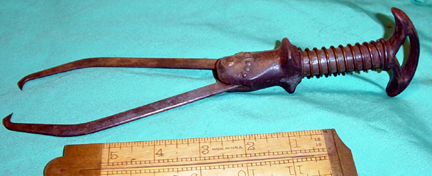 This pair of small ice tongs for moving pieces of ice
in home ice boxes was patented in 1887 and produced by the North Bros Mfg. Co.
It is shown in an early advertisement for their foundry products as "I X L" ice
tongs.
This pair of small ice tongs for moving pieces of ice
in home ice boxes was patented in 1887 and produced by the North Bros Mfg. Co.
It is shown in an early advertisement for their foundry products as "I X L" ice
tongs. This pair of small ice tongs for moving pieces of ice
in home ice boxes was patented in 1887 and produced by the North Bros Mfg. Co.
It is shown in an early advertisement for their foundry products as "I X L" ice
tongs.
This pair of small ice tongs for moving pieces of ice
in home ice boxes was patented in 1887 and produced by the North Bros Mfg. Co.
It is shown in an early advertisement for their foundry products as "I X L" ice
tongs.
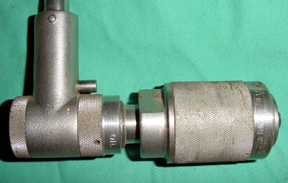
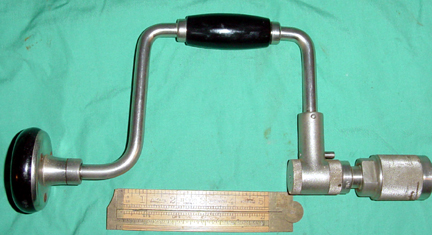
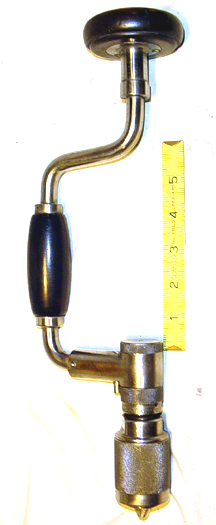
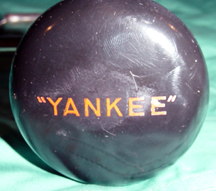
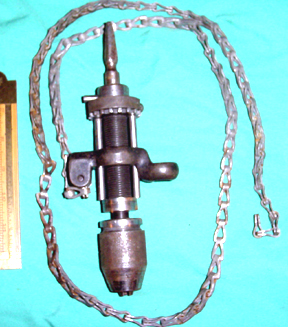 North
Bros produced other brace-related products, including very fine chain drills
that can be operated by braces. Here is an example of their No. 1500
Automatic Chain Drill, with automatic advance. Like the brace line, it is
probably the best tool of its type ever built.
North
Bros produced other brace-related products, including very fine chain drills
that can be operated by braces. Here is an example of their No. 1500
Automatic Chain Drill, with automatic advance. Like the brace line, it is
probably the best tool of its type ever built.
several North Bros Catalogues in my collection | |
"North Brothersí Manufacturing Company Product Guide" by Joseph W. Ward, Baraboo, Wisconsin, 2000 | |
"Antique & Collectible Stanley Tools" by John Walter, 1996 | |
and George Langfordís web page, http://www.Georgesbasement.com/ | |
For more information on patent ratchet screw drivers,
see Cliff Fales' website at
http://cfales.sos4net.com/index.htm
|